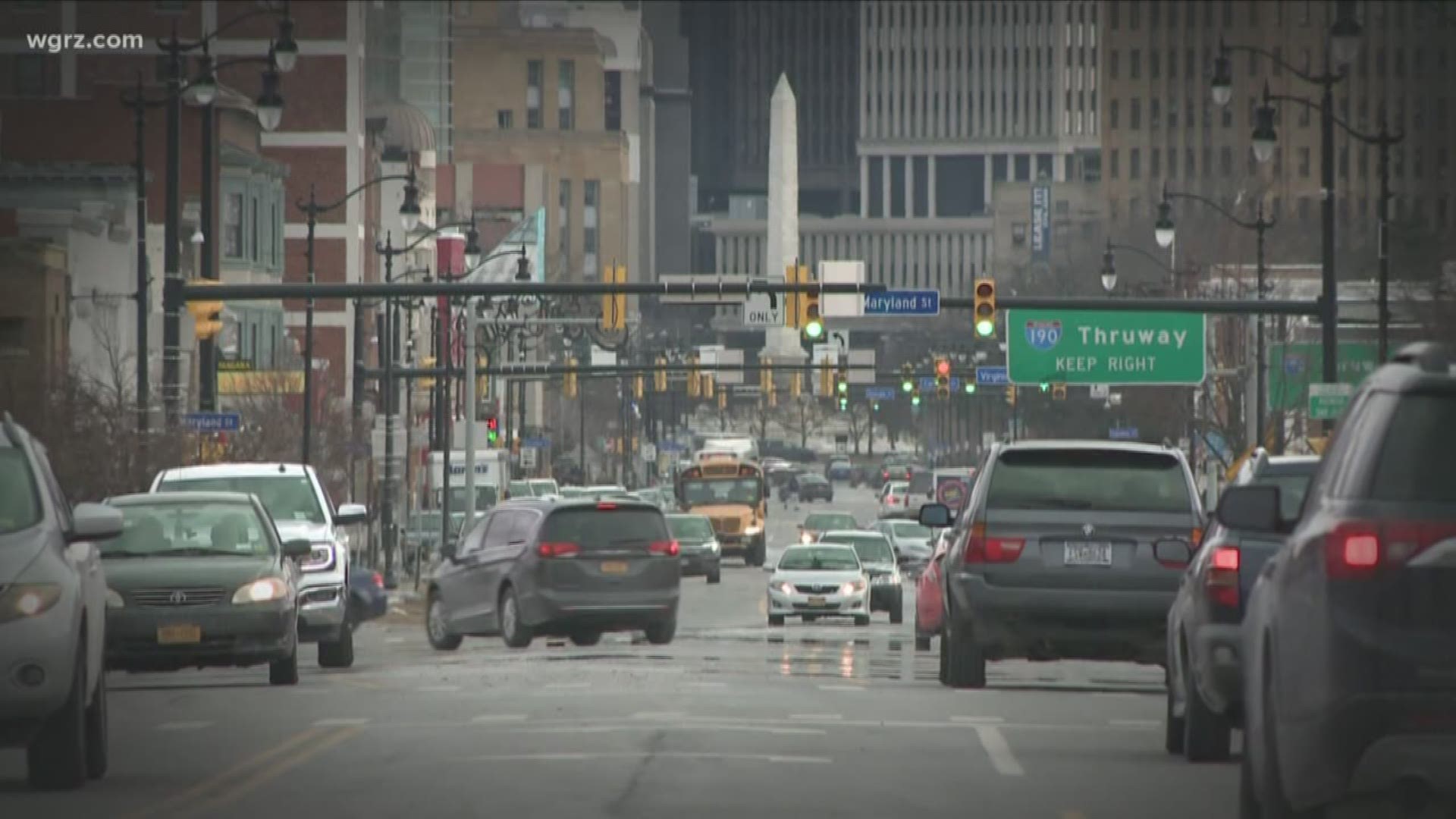BUFFALO, N.Y. — How will Buffalo respond to a new wave of transportation technology? That's what city leaders want to figure out.
Experts with Congress for the New Urbanism believe it's not that far fetched to picture things like self-driving shuttles, e-scooters and e-bikes coming to the area at some point in the near future. If and when that happens, it could change the way cities across the country look and operate.
On Saturday, representatives from organizations such as Congress for the New Urbanism and Stantec gathered in Buffalo to share recommendations for the city. That event came on the heels of a week-long workshop on the topic, looking into how Buffalo could adapt its existing streets, public spaces and buildings to accommodate things such as e-scooters and self-driving cars.
"Our goal as a city is for this to be a community-driven process where we all work together in envisioning the kind of future that we want for our community," said Mayor Byron Brown on Saturday.
"We see an opportunity for Buffalo to really be a leader for other cities of similar size across the nation," explained Ben Crowther, the program manager of transportation initiatives at Congress for the New Urbanism.
Brendan Mehaffy who heads the mayor's office of strategic planning says several cities are already deploying various new modes of transportation.
"Some with some level of success," Mehaffy said. "Some they're really learning from their mistakes."
He wants Buffalo to be prepared so the transition is as smooth as possible.
"If you go to a number of other cities right now, I know Columbus, Ohio is working on deploying an autonomous shuttle as we speak," Mehaffy said. "I think they might have even done it. The e-scooters, I think if you go to Washington D.C. ... there are scooters all over the place."
Mehaffy said the city is looking into areas where it might want to try out some of these technologies.
"There's a concept called a 'desire line,' which is two points where individuals tend to want to go," Mehaffy said. "So starting down at Canalside and the arena and heading all the way up to the Buffalo Niagara Medical Campus and points in between — that is a natural desire for people to want to get."
Another so-called 'desire line' could be connecting the waterfront to the area by the convention center.
"We're really trying to look at this form of transportation for everybody in the City of Buffalo so we're looking at it from an equity perspective, from low income to high income," Mehaffy said. "We're looking at it from an ability perspective."
On Saturday, Mehaffy told reporters, "One of the things that was shown was an autonomous vehicle shuttle. That is something that's already being tested at the University of Buffalo and that's something that we would like to test on city streets in the City of Buffalo. We recognize we need to designate probably a corridor for that, and we need to make sure that it's designed in such a way to support that technology."
He added, "That same corridor would also support a lot of the micro-mobility solutions that are out there right now with e-scooters."
At the State of the City address, Brown announced an Accelerator Fund that could support projects like these transportation enhancements. However, the city would still need help from the state and federal government, in addition to private partners, in order to move forward.
"There was a timeline of about a year — which is fairly aggressive, to be honest — to start maybe with some low impact changes, maybe along one of these corridors if we can build a consensus about that," said Mehaffy.
Mehaffy said an example of a low-impact change could be designations of zones for e-scooters or bikes. He said the autonomous vehicle piece may be a longer timeframe.
The city's working relationship with Congress for the New Urbanism is far from over. The organization's full report on the findings and recommendations will be available by the end of April.


